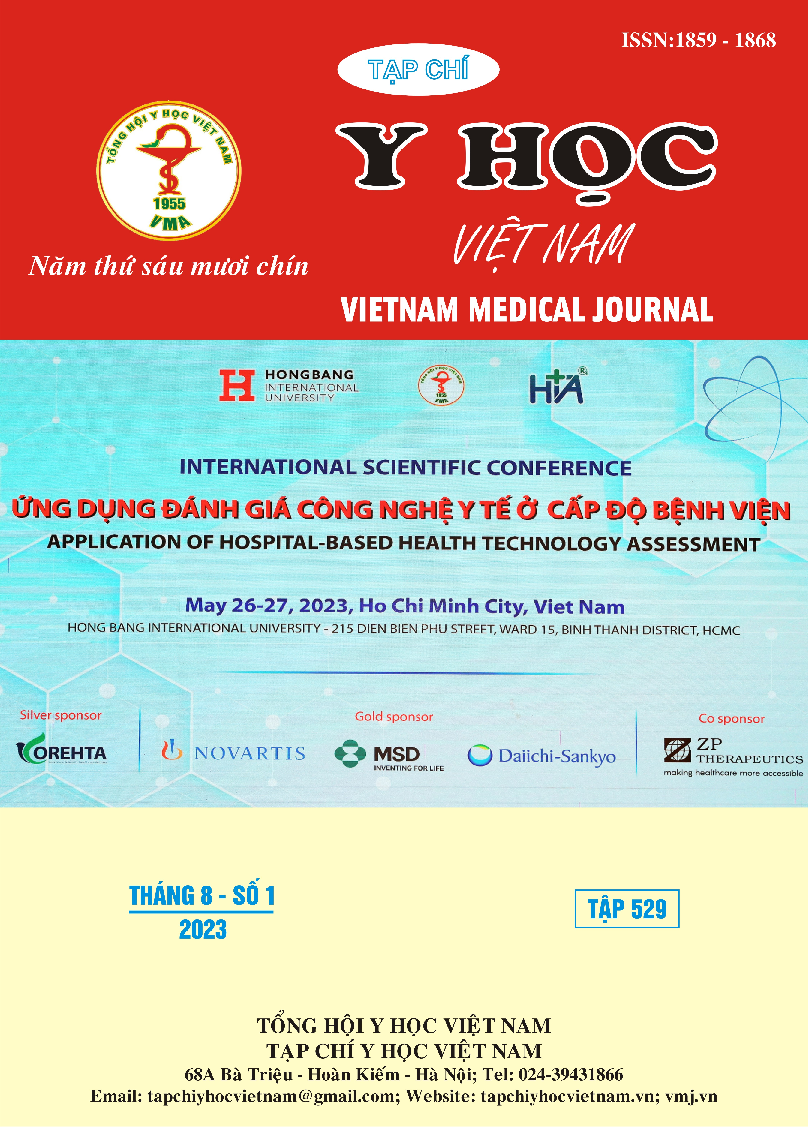EVALUATING DRY EYE SYNDROME IN GLAUCOMA PATIENTS WITH IOP CONTROLLED BY EYE DROPS
Main Article Content
Abstract
Objectives: to evaluate dry eye syndrome in glaucoma patients with IOP controlled by eye drops and some factors influencing on dry eye syndrome in glaucoma patients with IOP controlled by eye drops. Subjects and method: The study was performed on 30 eyes (16 patients) who were diagnosed with glaucoma and IOP is being adjusted with lowering pressure eye drops. Result: The study results showed that the percentage of patients with dry eyes after using lowering eye pressure drops was 90% with 30% being Nhẹ dry eye condition, 36.7% being Trung bình and 23.3% being serious stage. In addition, age, sex, preservation (BAK and Poly-quad) in medication and types of anti-glaucoma medication are related to dry eye condition of the above group of eyes. Thus, dry eye is very common in glaucoma patients being controlled with ocular pressure lowering drops and is influenced by a variety of factors
Article Details
Keywords
IOP, dry eye, lowering eye presssure drops.
References
2. Aguayo Bonniard A., Yeung J.Y., Chan C.C., et al. (2016). Ocular surface toxicity from glôcôm topical medications and associated preservatives such as benzalkonium chloride (BAK). Expert Opin Drug Metab Toxicol, 12(11), 1279–1289.
3. Safety profile of minimally invasive glôcôm surgery - PubMed. , accessed: 02/07/2023.
4. Schiffman R.M., Christianson M.D., Jacobsen G., et al. (2000). Reliability and Validity of the Ocular Surface Disease Index. Arch Ophthalmol, 118(5), 615–621.
5. Craig J.P., Nichols K.K., Akpek E.K., et al. (2017). TFOS DEWS II Definition and Classification Report. Ocul Surf, 15(3), 276–283.
6. Lemp M.A. (1995). Report of the National Eye Institute/Industry workshop on Clinical Trials in Dry Eyes. CLAO J Off Publ Contact Lens Assoc Ophthalmol Inc, 21(4), 221–232.
7. Sahlu M. and Giorgis A.T. (2021). Dry eye disease among Glôcôm patients on topical hypotensive medications, in a tertiary hospital, Ethiopia. BMC Ophthalmol, 21(1), 155.
8. Palikhey A., Koiree S., Kumar Mehta R., et al. (2022). Dry Eye Disease among Patients with Glôcôm under Topical Antiglôcôm Agents in a Tertiary Care Centre: A Descriptive Cross-sectional Study. JNMA J Nepal Med Assoc, 60(253), 800–804.
9. The Ocular Surface | Ento Key. , accessed: 02/03/2023.
10. Arita R., Itoh K., Maeda S., et al. (2012). Effects of long-term topical anti-glôcôm medications on meibomian glands. Graefes Arch Clin Exp Ophthalmol Albrecht Von Graefes Arch Klin Exp Ophthalmol, 250(8), 1181–1185.


